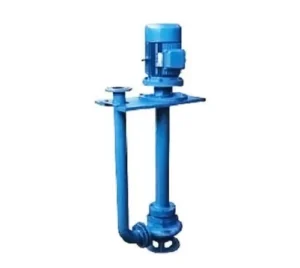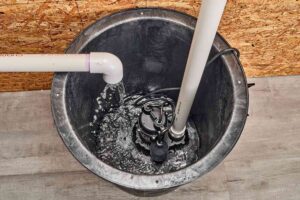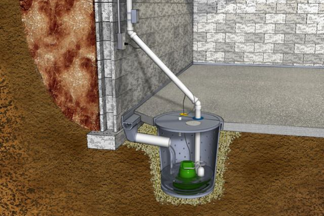
A basement flood is every homeowner’s worst nightmare. Your property is shielded by a sump pump from torrential downpours and rising waters that cause significant structural damage and expensive repair bills. Knowing which of the several sumps pumps best suits your needs is crucial. We’ll walk you through a sump pump’s operation and how to pick the best one for your house in the sections below.
What do sump pumps do?
The equipment that pumps water from your basement to the outside of your house is called a sump pump. A sump is a pit that was naturally formed, typically in the form of a hole dug beneath the surface of your basement floor. The sump pump is kept in this basin-shaped pit. The pump has valves that can detect rising water pressure or level. Sump pumps automatically remove extra water from the basement and away from your property using a discharge pipe when the water level becomes too high. A specified drainage area is connected to the sump pump by a line known as an effluent.
How do sump pumps function?
A sump pump is a device that monitors rising water pressure and levels to make sure they don’t go too high. To determine the amount of water in the basin, these pumps employ a switch. Rising water levels that trip the switch cause the pump to start pumping water into a discharge pipe and away from the house’s foundation. Water, batteries, or electricity can all be used to power pumps. Even though backup pumps are frequently included in sump pump systems, they are frequently powered by batteries or water in the event of a power outage. Primary pumps are typically connected in.
In what location should a sump pump drain?
Your sump pump’s water should be directed to a specific location, like a dry well, a creek, pond, or even a nearby drain. A drain point should not be placed where water will return to your house. Keep the dog at least 10 to 20 feet away from the house’s foundation. It is best to verify with your local government as some places have building laws that restrict where your sump pump can discharge.
Remember that you might need to add an additional drainage pipe and boost the sump pump’s horsepower to make up the difference.
varieties of sump pumps
Submersible, pedestal, battery-powered backup, and water-powered backup are the four most popular types of sump pumps. Find out more about these 4 pump types by reading on.
recessed sump pumps
Pump and motor are combined into one unit in submersible pumps. They’re sealed inside a basin in your basement, submerged. Submersible pumps are frequently quieter, take up less room in your basement, and clog less frequently than pedestal pumps because they are totally submerged in the water basin. They might not last as long as other sump pumps, though, because of the impact of being submerged in water. The best choice for houses with serious flooding problems is still this one.
Standing sump pumps
A pedestal sump pump has a separate engine and pump from a submerged sump pump. With a hose leading to the basin where the pump is located, the motor is mounted on a pedestal above the basin. The pump releases water into your chosen drain area through the hose. Because it is not submerged, the motor frequently outlasts other sump pumps and is simpler to access for maintenance needs. It also means that it can be larger and noisier than the submersible pump.
backup powered by batteries
An excellent method to add some additional protection against flood damage is with a battery backup sump pump. Your sump pump may still run even when your power is down during a storm when you need it most thanks to a battery backup with a float switch. The primary source of electricity for the pump also goes out with the power. When the basin’s water level rises, the float switch is activated, starting your battery’s activity.
backup powered by water
Your basin’s water is cleared by a water-powered backup using higher water pressure. The benefit of a water-powered system is that no batteries or backup monitoring is required. The use of more water is somewhat debatable and greatly increases your water cost. The installation of them is prohibited in several cities.
Which sump pump do I require?
For the safety of your home, choosing a pump with a sufficient horsepower is crucial. You still run the risk of flooding if you choose a sump pump with less horsepower than is required for the flooding in your area. Additionally, a larger horsepower than required will result in cycling, or the pump continuously turning on and off, which reduces its longevity. If your house is not built deeply into the water table and has an average amount of rainfall, a will be adequate for your property.
A 1.5 horsepower submersible pump can provide the extra power you need if your home is further below the water table, has more seepage problems, or needs a distant drainage point. Finally, a sump pump with 13000 GPH will handle the saturation if you routinely have significant flooding difficulties or utilise the pump outside or for business purposes.
Types of sump pump switches
Sump pumps with cast iron cores outperform those with plastic or stainless steel cores in terms of lifespan. Electric motors are vulnerable to heat since they produce heat on their own. Unlike plastic or stainless steel, the cast iron core is in direct contact with the motor and absorbs heat from the motor much more effectively.
Pressure switch: A pressure switch senses the amount of pressure in the water as it rises and triggers the action of the pump at a certain degree.
Vertical float switch: The vertical float switch is a magnetic switch that slides up and down a rod on the pump. As the water level rises, the float ascends the rod and kicks the pump on. When the water level descends, the switch lowers and tells the pump to turn off.
Tethered float switch: The tethered float switch is tied to the pump and floats in the basin. When the water rises and the switch cannot float any higher, an electrical signal is sent to the pump to activate it. When the switch cannot float because the water level is too low, an electrical signal tells the pump to shut off.
Diaphragm switch: This switch operates much like your diaphragm, flipping concave as the pressure rises and the back when it lowers, in and out. It is the most common type because it rarely gets stuck on or off.
Electronic switch: The electronic switch works not by any float, but by sensing the water pressure within the basin. As the water rises, so does the pressure which sets off the probes and switches on the pump.
Sump pump components
You should also think about other supplements for your sump pump. When your sump pump malfunctions, accessories like a water alarm attachment serve as a final line of defence to warn you before any damage is done. By extending your drainage point away from your home, a discharge hose can be used.
What a sump pump costs
According to the horsepower and flow rate, a basement submersible sump will typically cost between 8,225 and 32,903, with sump pumps for commercial applications costing between 41,129 and 82,259. For instance, the Matala GeyserFlow 3475 GPH Pump costs 19,989. Higher flow rate pumps, such the ShinMaywa Norus XP 11000 GPH Pump, start at around 74,033. You will frequently spend more on labour for installing a sump pump than on the actual pump. The price of a professional installation might range from 49,355 to 2,46,779 depending on the installation. Even while professional installation can be expensive, a sump pump that is properly installed will ultimately cost less than one that is not.
Factors that impact the cost of a sump pump
Below is a list of considerations for calculating the cost of a sump pump in your home:
- Type of sump pump
The type of sump pump you choose for your home will determine your cost. Factors such as the material used to make the sump pump, size, horsepower, additional features, including backup battery or a specified switch type can all contribute to the cost. - Basement material
The floor of your basement can play a part in the cost of installation. If your basement is made of cement or concrete, then the floor will need to be removed in the lowest point of your basement where you plan to install the pump. The thicker the cement, the higher the cost of labor. - Drainage
If your city requires a drainage point a distance from your house, yard drainage lines or extension hoses can increase the cost of installation. Not to mention, they can be hazards to your yard or even freeze in the winter. - Permits
The cost of a permit will vary depending on location, so it is best to consider beforehand. The guidelines will also help you factor the cost of the job. - Licensed professional
Installing the sump pump yourself can cut costs dramatically if you know what you are doing. But if you are unsure, it is best to go with a licensed professional. Installation cost is cheaper than treating a flooded basement.
Do sump pumps need to be used?
In properties that are prone to floods, sump pumps are essential. Flooding may be terrible for your house and your health, whether it results from above-average rainfall or basements built below the water table. The risk of upper respiratory infections, allergic responses, and asthma difficulties might increase even if your home doesn’t flood since moisture can lead to the growth of several types of mould. Without a mechanism to get the water outdoors, it will build up and possibly flood or dampen your basement.
Alternatives to sump pumps
French spouts
By establishing drainage routes with the least amount of resistance, French drains help to keep water from accumulating. Making paths of least resistance that keep water from pooling minimises flooding because water always chooses the path of least resistance to travel. French drains use made-up routes to direct water in the best possible way around a house. They make use of a drainage pipe with holes in it to channel water away from the house and into a drainage system.
Despite their effectiveness, French drains cannot totally stop water from entering a house. You will need a portable sump pump in addition to your French drain if you live in a rainy area.
water-resistant substance
Wall holes that allow water to get through cause basements to flood. If water seeps through your home’s walls, sealing the crevices with waterproof caulking solution can help prevent it from getting into your basement.
gutter cleaning
Because gutters do not adequately divert water away from the house, basements frequently flood. Dead insects, twigs, leaves, and other debris can clog gutters and downspouts, preventing water from draining from them. Gutter guards and downspout filters are great for preventing water buildup in your downspouts. Cleaning your gutters on a regular basis will keep them from flooding your property if you don’t have gutter guards or downspout filters.
Ground that slopes
Before construction, sloping, often referred to as grading, entails making a little slope all around a house. This slope may become level or even reverse as a house ages. For every foot of ground in the first 10 feet surrounding a home, the ideal soil gradient is 1 inch. Although slopes are always created during building, grading that degrades over time can be fixed by adding soil around a house.
Why do sump pumps break down?
Errors in installation, manufacturing, and longevity can cause sump pumps to fail. Make sure you are familiar with the procedure if you plan to install the pump yourself. If you install it incorrectly, you will lose far more money in water damage than you will save by doing it yourself. Pump faults can also be caused by switches that keep turning on or off continuously or by jammed switches. Last but not least, sump pumps, like every machine, have a lifespan that can range from 7 to 10 years, depending on how much they are used.
Do I require an emergency sump pump?
Sump pumps are efficient at eliminating water from a house, but a variety of things might make them stop working. When your main sump pump fails, having a backup pump assures that you won’t suffer water damage. When electricity is interrupted, flooding is a worry since some primary sump pumps are hooked into the house and do not have a battery backup. When severe storms knock out your electricity, having a backup that is either water-powered or has a battery backup will protect your property. Although having a backup sump pump is not necessary, it is advised for the wellbeing of your house.
How can I tell if my sump pump needs to be replaced?
It is quite likely that you need to replace your sump pump if it is older than ten years, makes loud noises, runs for an unusually lengthy period of time, cycles irregularly, or exhibits any of the above symptoms.
Loud noises
A major issue with your pump is present if loud noises can be heard coming from the sump pump pit. The motor of the pump will begin to roar as it pumps the water away from your house as it nears the end of its lifespan. While all sump pumps generate some noise as they remove water from the basement, the noise shouldn’t ever get to the upstairs of your home. Motors that are rattling, clanging, or screaming are signs that they are about to fail or that the pump was first built wrongly. Sharp angles in the discharge lines coming from the sump pump pit will produce a lot of noise.
A damaged impeller may potentially be the cause of loud noise. The sump pump may screech and rattle as it tries to draw water out of the basin if the impeller has been clogged with debris like leaves, dirt, and sticks. When operating, an impeller that has been fractured or otherwise damaged may rattle loudly. When the pump is not in use, you might want to remove it and check the parts to make sure they are not damaged or blocked.
Constantly running
Your pump is either nearing the end of its useful life or is already close to it if it is running continuously. Continuous cycling of a sump pump is never advised. The pump could very well be the wrong size in every way. A pump that is undersized for the amount of water it is expected to move will always have trouble keeping up with the demands made of it. This will wear out the pump, overwork the motor, and cause an early pump failure.
A broken or jammed float switch may also be the cause of a pump that runs continuously. The mechanism that activates the pump is the float switch. Lightweight flotation switches will float on the surface of the increasing water. The switch will signal the pump to start displacing floods once the water in the basin reaches a specific height. If this float switch gets entangled in pipes or wires or gets blocked by debris, it will constantly alert the pump that the water level is higher. The float switch may also get stuck if the sump pump changes inside the basin and it comes into contact with the pit’s walls.
Cycling irregularly
The pump will also have to perform extra effort if the float valve is positioned too low in the basin. If only a few inches of water are required to start the pump’s cycle, the pump will run continuously. The pump and its mechanical parts are put under stress by this short-cycling. If your pump is taking too long to empty your basin, it probably lacks the necessary horsepower to complete the task. In the event of a severe storm or flooding, a pump that is unable to clear out the basin during a typical rainfall may quickly become overworked.
Old age
Regardless of how effective your sump pump is, it will eventually need to be changed, typically every ten years. Although some pumps may last longer than ten years, issues are more likely to develop after this age. Your home will be less likely to sustain water damage and consequently incur higher repair costs if the pump is replaced every ten years.
Explore our in-depth tutorial on how to replace your sump pump at home if you believe it is time.
If you’re still unsure of the type of sump pump that would be best for you, leave a comment below or get in touch with us. Follow our learning centre blog in the interim to discover additional water systems that might be improved.


